You have no items in your cart. Want to get some nice things?
Go shopping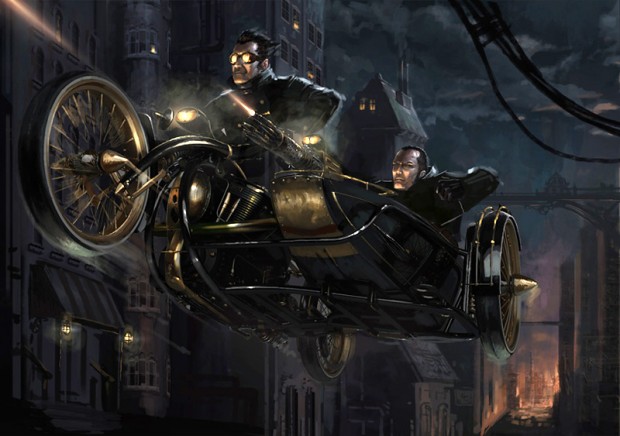
Come this way. Your butler helps you slip into your coat before you stride down the hallway. Lady Agnes is beside you, wearing her bonnet, cloak and close-fitting corset. Meanwhile, you are clad in your waistcoat, cravat and top hat. You check the time on your watch-and-chain. It is almost twelve.
The carriage arrives. The driver lashes his whip, and it carries you both through the mist-wreathed, cobbled streets of the city. The bells from a nearby church chime midnight as the carriage rattles through the murky gloom of a thick pea-soup mist. It stops outside a tall, hulking building engulfed in shadows from the dim lanterns. You and Lady Agnes step out of the carriage, before you knock on a wooden door with the decorative silver handle of your cane. A hunchback opens the door, a wizened figure with wild, snow-white hair and grimy, soot-stained hands. He wears a white apron and has a pair of filthy goggles perched upon his forehead. “Welcome, Lord Fotheringham,” he whispers. “I’ve been expecting you.”
You both follow the hunchbacked professor into his laboratory, a veritable cornucopia of cluttered objects: test tubes and containers filled with smoking potions; various elaborate clockwork devices and, in the corner, the professor’s masterpiece—his steam-powered machine, all gears, winches, hooks and pulleys. He polishes the brass with a filthy rag, checks the myriad wheels and cogs, before pulling on a lever. His action creates a roaring, incessant tumult. The infernal noise slowly rises to a crescendo, a hideous cacophony so deafening that you and Lady Agnes are forced to plug your ears…
Welcome to the world of steampunk.
What exactly is steampunk?
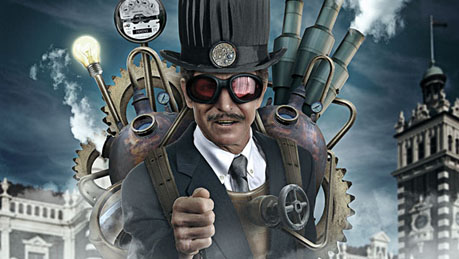
I will attempt to offer my own definition along with my “literary’” example above. It is a term for a genre and style which originated in literature but which has extended to art, music, fashion and infiltrated popular culture in the form of comics, graphic novels, films (most recently Hugo, directed by Martin Scorsese) and even computer games. Steampunk originates from the historic period of the 19th century and the turn of the 20th—broadly speaking, “Victoriana”—specifically referencing what is usually a fantastic, fictional world dominated by steam-powered technology, or other anachronistic forms of technology from the period such as clockwork devices, but also retro-futuristic inventions as the inhabitants of the 19th century may have imagined. It is a hybrid genre, often encompassing speculative fiction, science fiction, alternate history, horror, and fantasy, intermingled with cultural attitudes and settings from the Victorian Age, seen and re-imagined through a skewed, modern looking glass.
The term “steampunk” was reportedly coined in a 1987 letter to Locus, a science-fiction magazine, by the SF and fantasy author G. W. Jeter, who had written what he considered to be “Victorian fantasy” in the shape of his novels Morlock Night and Infernal Devices. He suggested classifying these works, and other novels by contemporaries such as Tim Powers (At the Anubis Gates), as being by writers who were “steam-punks”; however, there are some works of literature, published prior to Jeter’s invention of the term, which have also been retrospectively labelled as such. This was in contrast to the “cyberpunk” fiction movement at the time, which tends to be set in more dystopian futures where daily life is impacted by rapid technological change, headed by the likes of novelists William Gibson and Neal Stephenson—Neuromancer and Snow Crash being definitive.
Before the 1980s
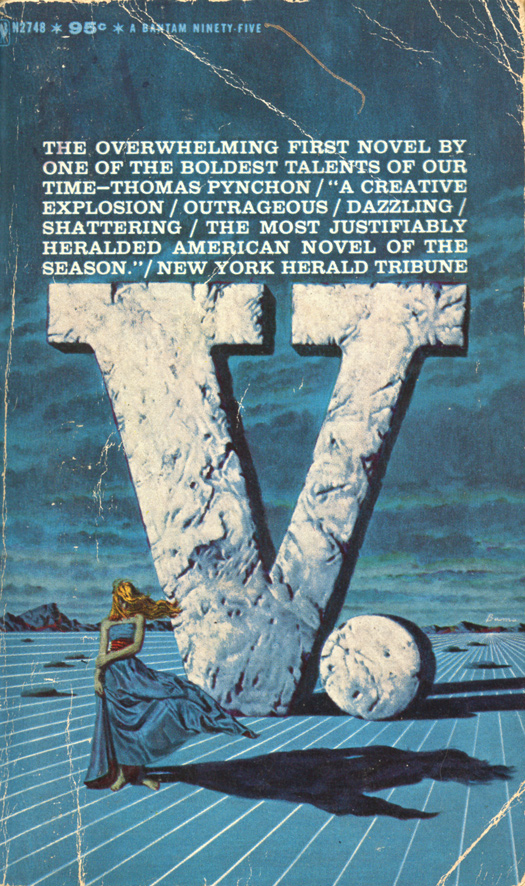
Works showing multiple aspects, traits and tropes of “steampunk” prior to the 1980s include the films of Georges Méliès—notably, The Astronomer’s Dream and A Trip to the Moon with fantastic imagined technology of the period and striking images—and Fritz Lang’s film Metropolis in the forms of the mad-professor type, Rotwang and the automaton figure of “Maria”; the final novel of Mervyn Peake’s Gormenghast trilogy, Titus Alone, with its underground city and anachronistic technology; Michael Moorcock’s alternate history novel The Warlord of the Air, which contains steampunk elements not only in terms of depicted technologies but also most notably in its re-imagining of the world if imperialist policies had continued to their logical, tragic conclusion. The mysterious protagonist “V” in Thomas Pynchon’s postmodern novel of the same name also bears steampunk elements in terms of her physical transformation into an automaton figure over a period of time; Pynchon later returned to the genre most significantly in his 1990s-novel, Against the Day.
The 19th century and turn of the 20th
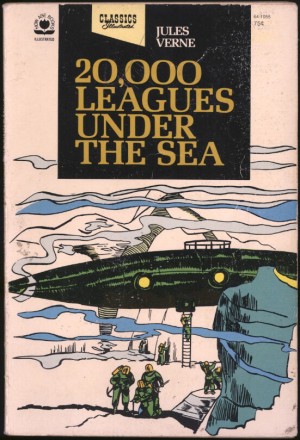 There are several writers of this period whose literary works have heavily influenced the artistic and creative direction of the steampunk movement. Jules Verne and H. G. Wells are perhaps the most notable examples, depicting idiosyncratic visions of the future through a perspective of the period itself. Other key authors and influences include the famous works and literary styles of Robert Louis Stevenson, Bram Stoker, Wilkie Collins, Charles Dickens, G. K. Chesterton, Arthur Conan Doyle, H. P. Lovecraft, Mary Shelley (Frankenstein), Edgar Allan Poe, Mark Twain (Americana/Wild West steampunk) and even Jane Austen (see the contemporary work of Jacob Clifton’s “The Commonplace Book“).
There are several writers of this period whose literary works have heavily influenced the artistic and creative direction of the steampunk movement. Jules Verne and H. G. Wells are perhaps the most notable examples, depicting idiosyncratic visions of the future through a perspective of the period itself. Other key authors and influences include the famous works and literary styles of Robert Louis Stevenson, Bram Stoker, Wilkie Collins, Charles Dickens, G. K. Chesterton, Arthur Conan Doyle, H. P. Lovecraft, Mary Shelley (Frankenstein), Edgar Allan Poe, Mark Twain (Americana/Wild West steampunk) and even Jane Austen (see the contemporary work of Jacob Clifton’s “The Commonplace Book“).
Steampunk as a phenomenon

Steampunk is now a movement firmly ingrained within modern contemporary culture, lurking on the boundaries and challenging the pre-conceptions of the mainstream. Its imaginative possibilities can challenge assumptions about technology, history, identity, gender and sexuality. There is even a steampunk festival, the “Weekend at the Asylum” run by the Victorian Steampunk Society. It is the largest steampunk festival in Europe and is held at The Lawn in Lincoln, a converted Victorian mental asylum, and it is possible to buy steampunk-style clothes for dress-up: Victorian-era corsets and dresses, waistcoats and watches, and various other accessories.
Steampunk has also entered the realm of computer games. Dishonored, developed by Arkane Studios and set in the fictional industrial city of Dunwall, is an excellent example of a game with steampunk elements, a place where “technology and other-worldly forces co-exist” in a late 19th century-style setting. The bizarre and genre-defying possibilities of the movement have even influenced music and created the unlikely rise of the “steampunk rapper”, Professor Elemental, who has merged hip hop and steampunk culture.
Then there is the ambitious Clockwork Watch project, developed by Yomi Ayeni, which has sought to create a worldwide interactive steampunk narrative, merging re-imagined stories and settings from a historic past of anachronistic technologies with the modern realities of social networks and online publishing. The audience themselves can contribute and co-author through the mediums of ongoing live events, graphic novels, role play, online news sites and a feature film. As it says, “You can read, watch, and hear Steampunk, but at Clockwork Watch you can LIVE it.”
My own encounters with steampunk
My first encounters with steampunk were through reading the British comic 2000AD, and the Indigo Prime story “Killing Time”, which re-imagined the Jack the Ripper murders set against an occult background of arcane and cosmic horror. Then there was the Hollywood film Wild Wild West starring Will Smith, which attempted to bring Americana steampunk into the mainstream.
Personally I’ve always enjoyed the novels of Robert Rankin, who brings warm, imaginative humour and originality to the steampunk literary genre, particularly in the Brightonomicon and Retromancer. These novels describe the adventures of protagonist Jim Pooley, the grand magus Hugo Rune, and his arch-nemesis Count Otto Black.
My favourite steampunk novels at the moment are the trilogy of books by Gordon Dahlquist, Glass Books of the Dream Eaters, The Dark Volume and The Chemickal Marriage, which I would highly recommend. They are set within a 19th-century style world of alternative technologies, mesmerism and the occult, gloomy mansions, secret laboratories, airships, dirigibles and shocking Ripper-style murders, Oriental assassins and calculating femme fatales.
Books you should start with
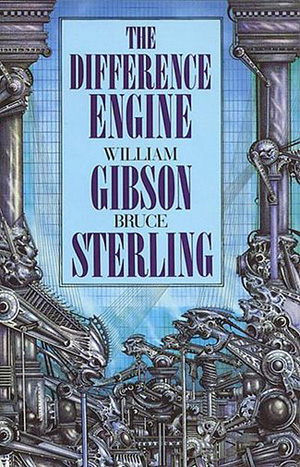 The Difference Engine by William Gibson and Bruce Sterling (1990)
The Difference Engine by William Gibson and Bruce Sterling (1990)
This is primarily a book of alternate history but also a significant demonstration of all the tropes and plot devices of steampunk fiction. It is based on the premise that the 19th-century inventor Charles Babbage succeeded in building a mechanical computer at the time, and the book re-imagines the course of history through an espionage plot, and the impact of the invention on society, culture and historical events. Mainly set in 1855, it is an intriguing and thought-provoking novel. The Victorian world of the novel, with mass-produced Babbage computers, emulates and mirrors our modern reality of the information technology boom and the Internet, and therefore explores its social and political consequences within this context. Advanced steam technology has also served to make the British Empire far more powerful in this fiction than in historical reality. The plot follows Sybil Gerard, a political courtesan and daughter of an executed Luddite leader; Edward “Leviathan” Mallory, a paleontologist and explorer; and Laurence Oliphant, a travel writer whose work is a cover for espionage activities—whose intrigues take place against the backdrop of a revolutionary Victorian London. At the climax of the novel, amid ominous references to an “Eye”, there is the depiction of a dystopian 1991, where an all-powerful artificial intelligence is now controlling all human activity—a dark, malevolent mirror against the reality of modern technology and its influences on our lives.
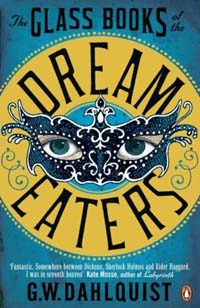 The Glass Books of the Dream-Eaters by G. W. Dahlquist (2006)
The Glass Books of the Dream-Eaters by G. W. Dahlquist (2006)
A thrilling journey through a nightmarish, garish steampunk world, the novel follows three very different protagonists: Celeste Temple, whose curiosity about her rejection from her lover Roger Bascombe leads her into a lurid and intricate conspiracy surrounding the mysterious “glass books” and the strange alchemical “transformations” taking place at a masquerade ball in a remote country mansion; Cardinal Chang, a facially disfigured hired assassin and opium addict, who is drawn into the same conspiracy when his intended target is murdered at the ball before he can get to him; and Dr Abelard Svenson, the physician responsible for a European prince who becomes involved in the elaborate plot sweeping the central characters to each narrow escape from danger and every thrilling cliffhanger moment. The three well-drawn and interesting protagonists uncover a sinister cabal at the heart of the conspiracy. The novel is vivid and remarkably original, a rollercoaster adventure that is heavily inspired by Wells, Stoker, Conan Doyle and Rider Haggard. It is the first and best of the trilogy, with a vast array of characters and page-turning scenes.
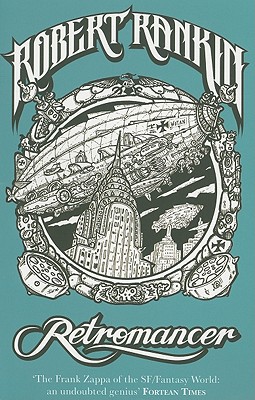 Retromancer by Robert Rankin (2009)
Retromancer by Robert Rankin (2009)
This is the ninth novel in the Brentford series. Like much of Rankin’s work, it is a light-hearted, humorous look at the steampunk genre—yet also an original and gripping adventure with amusing, memorable characters. The central character Jim Pooley (“Rizla”) wakes up in Brentford in the year 1967 only to discover that Nazi Germany has won the Second World War and North America is a nuclear wasteland. His local cafe is serving Bratwurst rather than a typical English breakfast. Enter the grand magus Hugo Rune who takes Rizla back in time to 1940s London, and solve twelve mysteries to alter the future back to normal reality. They embark on a string of far-fetched and tongue-in-cheek adventures: fighting Nazis and pirates, encountering werewolves and robots, and taking an interesting trip on board an airship—until they finally encounter Hugo Rune’s arch-enemy, Count Otto Black. Rankin has a unique style and humour that may not be to everyone’s taste, but I enjoy the liberties he takes with puns and with narrative and highly recommend his novels.
Which books would you recommend to someone reading steampunk for the first time?

About Steven Mace
Steven Mace is a thriller, fantasy, SF and horror fiction writer based in London. His themes and interests include supernatural fiction; steampunk and cyberpunk fiction; magical realism; the occult, mythology, fairy tales and human psychology. He studied English Literature and Victorian Studies and is currently employed as a researcher.




